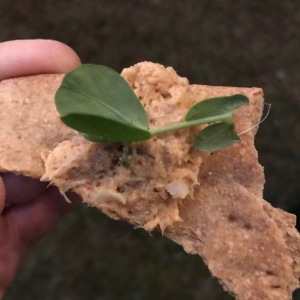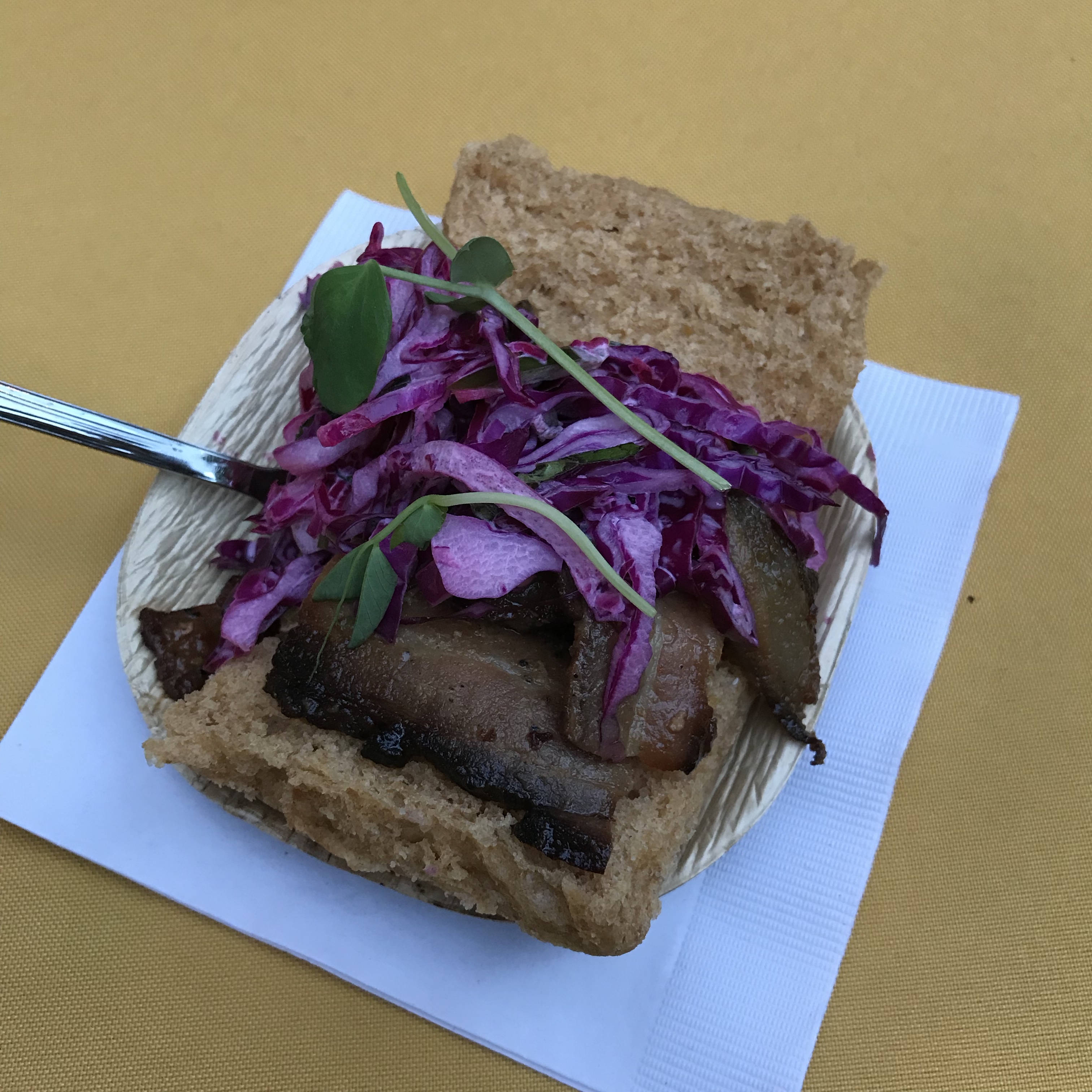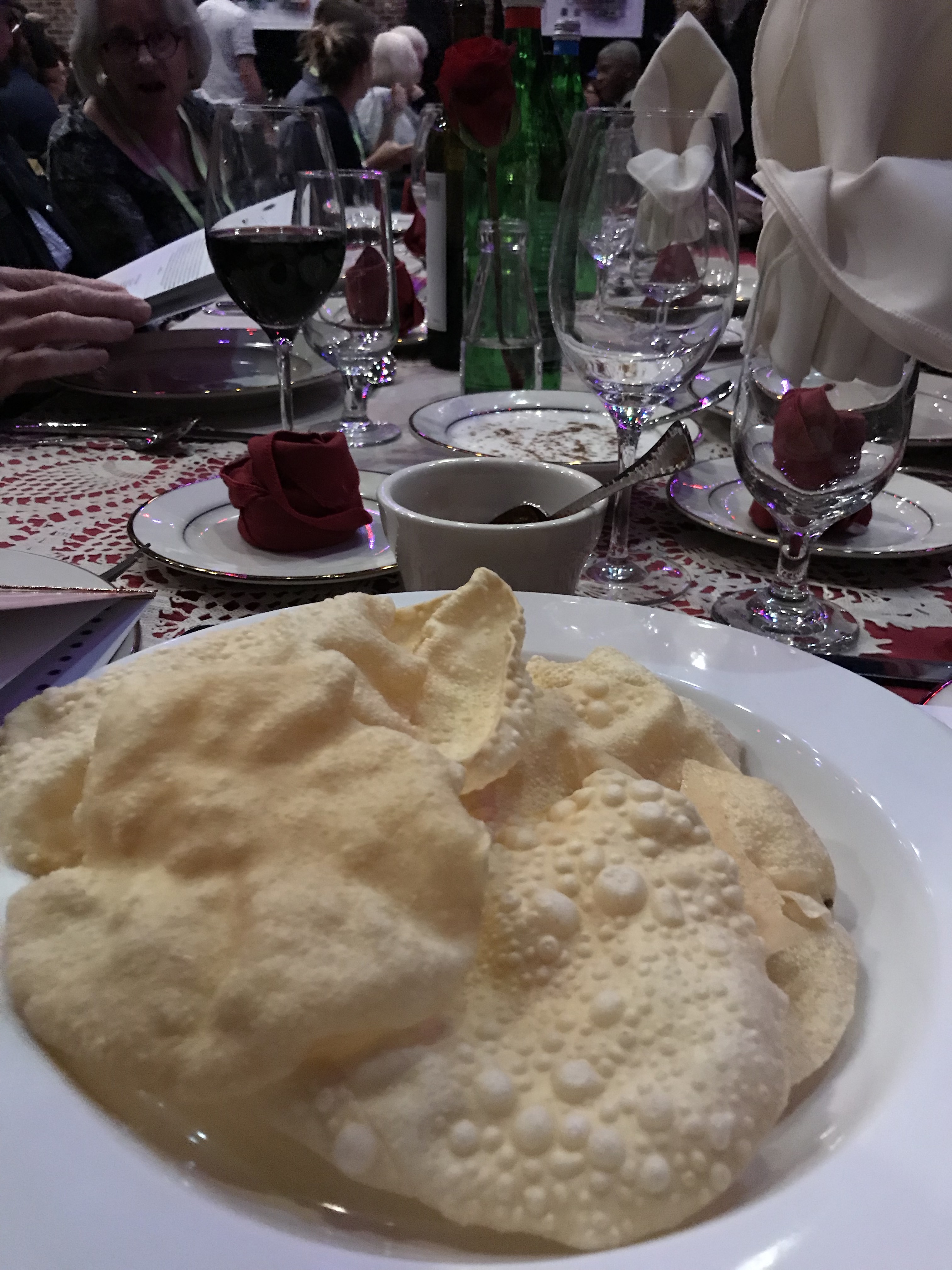(As the 2021 Southern Foodways Alliance Symposium approaches, I find myself looking ahead to the list of chefs, mixologists, speakers, and attendees, and wishing I was already there. A little like Christmas. But I also like to look back and remember those same aspects – every year it’s a part of getting ready. Even after skipping a year of live events, looking back at 2019’s gathering makes me hungry. For all of it.)

People who know oysters know oysters. I realize that sounds redundant, but here’s what I mean. I would expect that someone who eats a lot of oysters could tell differences between different batches. They have their own terroir, except it’s water instead of soil. Oysters from Apalachicola, Florida, have a flavor that’s distinct compared to oysters from the coast of Virginia. I have to assume that’s the case, because good oyster bars always have a list of where their oysters hail from, and if there wasn’t a difference, why buy the chalkboard?
As you can probably tell, I don’t know oysters. I might know something about them, but I don’t know them. Many years ago, however, I had a brief relationship with oysters. Shoney’s had great fried oysters back in the day, at least in the mind and on the palate of an uncultured pre-teen. Until one day they didn’t. I had one that didn’t taste quite right, or perhaps it was that dark green substance that appeared in the middle of a bite, and that was the end of that.
At some point along the journey into grown-up-hood, I was talked into trying some raw oysters – rather, a raw oyster, singular – and I did it just to say I’d done it. Bucket list checked. Then a few years ago at a Southern Foodways Alliance Symposium, I had another chance to try them. This time I was introduced to mignonette sauce – a mix of vinegar, shallots and pepper – which went a long way towards improving my oyster experience.
Then we were back in Oxford at the 2019 SFA Symposium. For the second year in a row we began the weekend in the company of William Faulkner, or at least it felt like it since we were on the grounds of his home, Rowan Oak. The evening began with multiple tables filled with raw oysters from various locales, brought to us by Bryan Rackley (Kimball House and Watchman’s of Atlanta) and Oyster South. I did try one, doused with mignonette, of course. And that was that. I’m sure they were amazing to people who know oysters, and I wish I was one of those people. But the night was not over – I would soon give them another chance.
Meanwhile, as we wandered around visiting old friends and meeting new ones, trays of smoked Simmons farm-raised catfish dip on house-made crackers were being passed around. This was a seafood dish I could get into. Rarely did a tray pass without my partaking of a bite.
When it comes to seafood salads/dips I am most familiar with tuna. These days I average eating tuna salad about once a week. A few years back I had dip made from smoked mullet at Ted Peter’s Smoked Fish restaurant in St Petersburg, Florida, thanks to their appearance on Diners, Drive-Ins and Dives. And I’ve had catfish dip at least once before. This night’s version, from Chef Bill Briand (Fisher’s, Orange Beach) was excellent, and to take the time to make the crackers was an extra nice touch. I only quit stopping servers to take another when I realized I might be full before the main event.
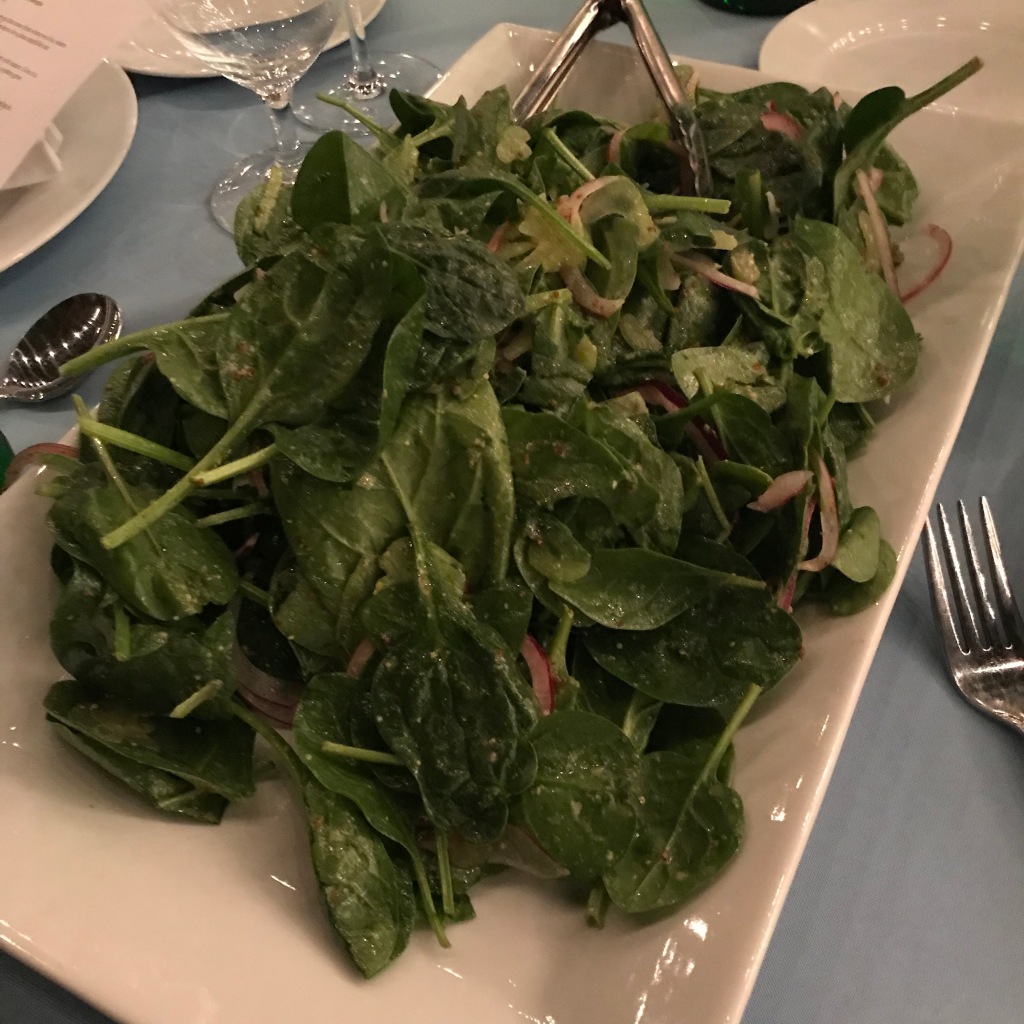
Dinner (also from Chef Briand) was once again focused on the oyster. Yes, there was a very nice spinach salad with red onion and a creole mustard vinaigrette. Yes, there was a big bowl of root beer-roasted sweet potatoes. (Sweet potatoes enhanced by more sweetness; a little more subtle than a brown sugar topping, but a sweet infusion nonetheless.) But the centerpiece of the family-style dinner tables that night was the Back of the House Oyster Stew.
Chef Briand used to work with Donald Link in New Orleans, and it was there that they came up with the idea of this stew, with herbsaint and fennel as the defining flavors. As someone who doesn’t know oysters, I therefore don’t know much about oyster stew. But even if I’d had ten varieties of stew in the month before this night, I still think I would have ranked this one near the top.
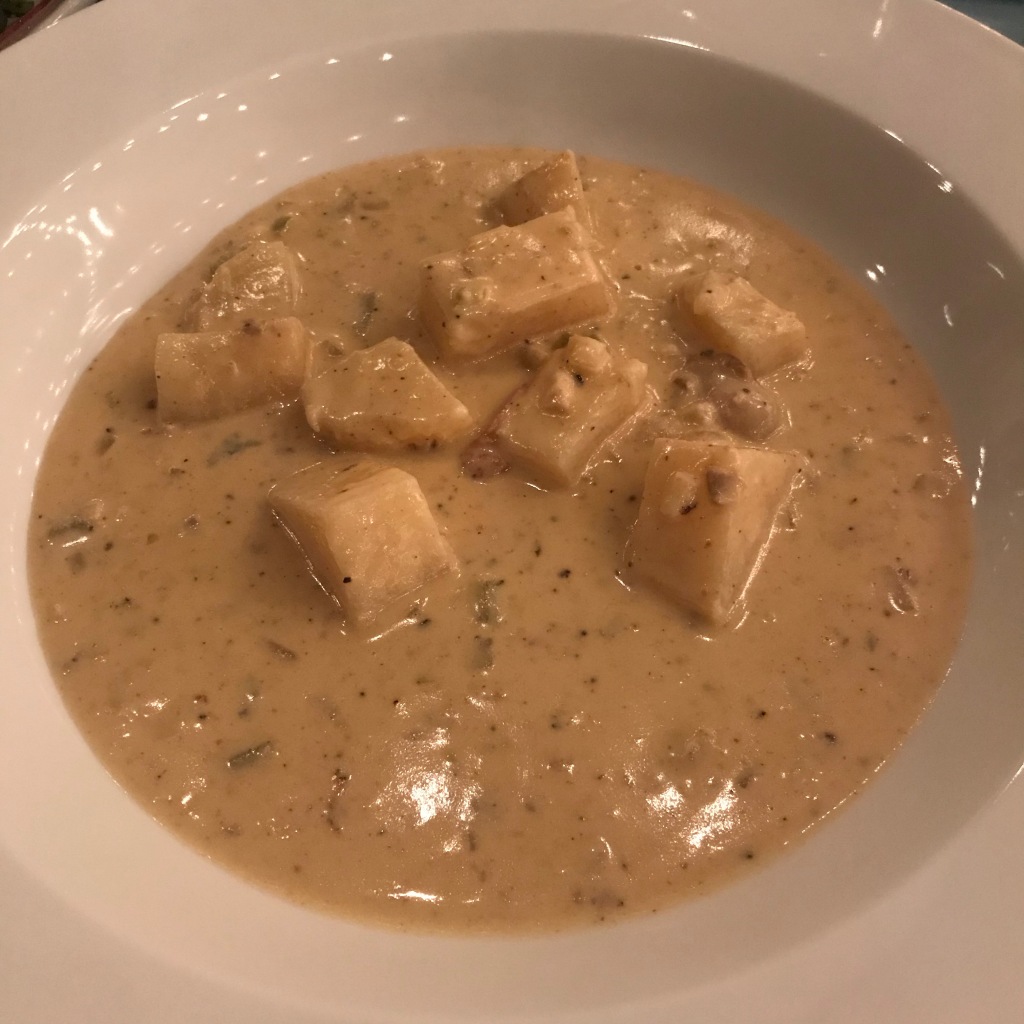
It was a cool night, and a big bowl of this creamy, steaming stew was the perfect dish to warm us up. There were big chunks of potato to help offset the rich cream stock, and the herbs were evident. And of course, there were fresh oysters that had been added just before we sat down to eat. It was the kind of dish that was so satisfying, bowl-scraping or sopping up the dregs with bread would have been completely appropriate. Instead, I went back for another bowl. Part of a bowl, at least – I tried to be gracious.
I don’t know if I’ll ever become an oyster aficionado. It would be nice to have the kind of trained palate that could taste one on the half-shell and be able to pinpoint the body of water in which it was born. It’s unlikely…but stranger things have happened. In the meantime, I feel like my relationship with oysters is back on the right track.

